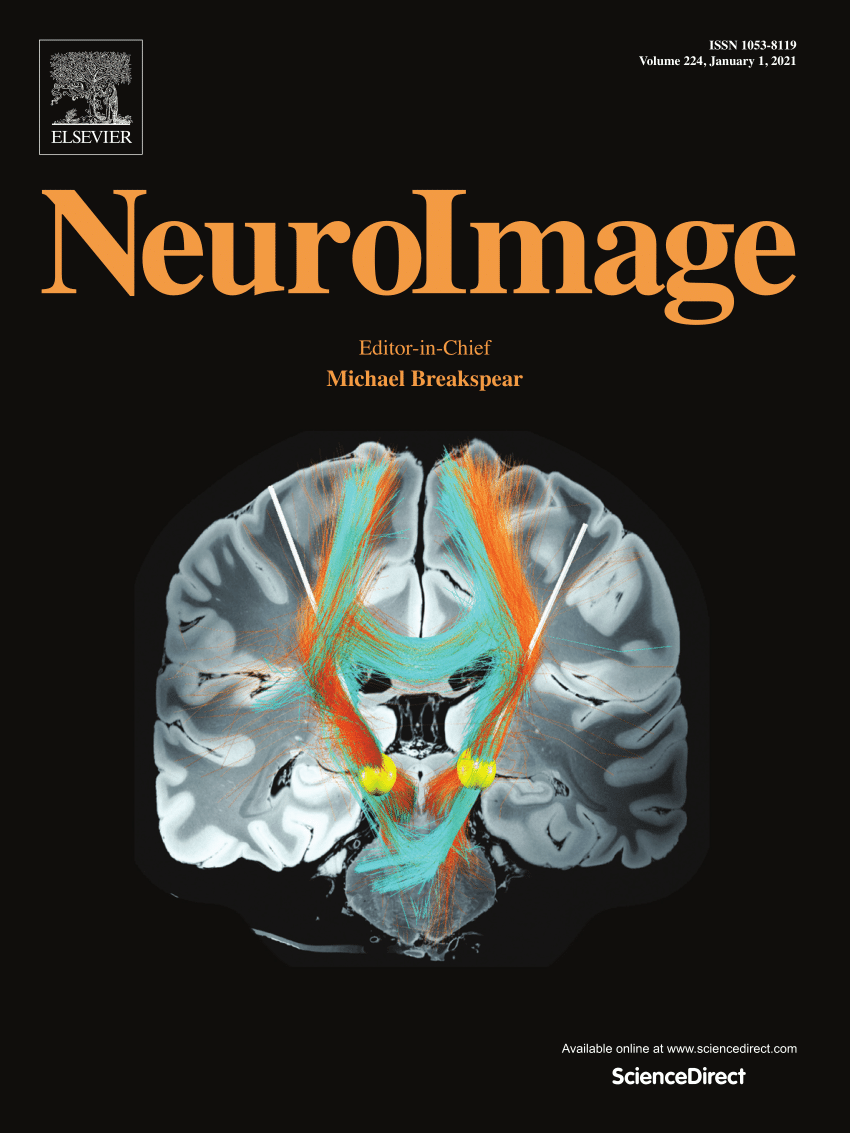Time- and sex-dependent effects of juvenile social isolation on mouse brain morphology
IF 4.7
2区 医学
Q1 NEUROIMAGING
引用次数: 0
Abstract
During early life stages, social isolation disrupts the proper brain growth and brain circuit formation, which is associated with the risk of mental disorders and cognitive deficits in adulthood. Nevertheless, the impact of juvenile social isolation on brain development, particularly regarding variations across age and sex, remains poorly understood. Here, we investigate the effects of social isolation stress (SIS) during early (3-5 weeks old) or late (5-7 weeks old) juvenile period on brain morphology in adult male and female mice using ultra high-field MRI (11.7 T). We found that both early and late SIS in female mice led to volumetric increases in multiple brain regions, such as the medial prefrontal cortex (mPFC) and hippocampus. Correlation tractography revealed that the fiber tracts in the right corpus callosum and right amygdala were positively correlated with SIS in female mice. In male mice, early SIS resulted in small volumetric increases in the isocortex, whereas late SIS led to reductions in the isocortex and hypothalamus. Furthermore, early SIS caused a negative correlation, while late SIS exhibited a positive correlation, with fiber tracts in the corpus callosum and amygdala in male mice. Using a Random Forest classifier, we achieved effective discrimination between socially isolated and control conditions in the brain volume of female mice, with the limbic areas playing a key role in the model's accuracy. Finally, we discovered that SIS led to context fear generalization in a sex-dependent manner. Our findings highlight the importance of considering both the time- and sex-dependent effects of juvenile SIS on brain development and emotional processing, providing new insights into its long-term consequences.
求助全文
约1分钟内获得全文
求助全文
来源期刊

NeuroImage
医学-核医学
CiteScore
11.30
自引率
10.50%
发文量
809
审稿时长
63 days
期刊介绍:
NeuroImage, a Journal of Brain Function provides a vehicle for communicating important advances in acquiring, analyzing, and modelling neuroimaging data and in applying these techniques to the study of structure-function and brain-behavior relationships. Though the emphasis is on the macroscopic level of human brain organization, meso-and microscopic neuroimaging across all species will be considered if informative for understanding the aforementioned relationships.
 求助内容:
求助内容: 应助结果提醒方式:
应助结果提醒方式:


